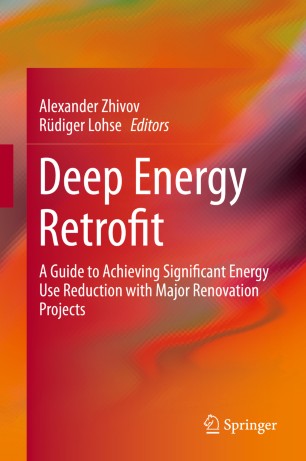

Most ebook files are in PDF format, so you can easily read them using various software such as Foxit Reader or directly on the Google Chrome browser.
Some ebook files are released by publishers in other formats such as .awz, .mobi, .epub, .fb2, etc. You may need to install specific software to read these formats on mobile/PC, such as Calibre.
Please read the tutorial at this link: https://ebookbell.com/faq
We offer FREE conversion to the popular formats you request; however, this may take some time. Therefore, right after payment, please email us, and we will try to provide the service as quickly as possible.
For some exceptional file formats or broken links (if any), please refrain from opening any disputes. Instead, email us first, and we will try to assist within a maximum of 6 hours.
EbookBell Team

5.0
90 reviewsThis book provides detailed information on how to set up Deep Energy Retrofits (DERs) in public buildings, and shares in-depth insights into the current status of the major technologies, strategies and best practice examples of how to cost-effectively combine them. Case studies from the U.S.A. and Europe show that that Deep Energy Retrofit can be achieved with a limited core technologies bundle readily available on the market. Characteristics of some of these core technology measures depend on the technologies available on an individual nation’s market, on the minimum requirements of national standards, and on economics (as determined by a life cycle cost analysis). Also, requirements to building envelope-related technologies (e.g., insulation levels, windows, vapor and water barriers, and requirements for building airtightness) depend on specific climate conditions. This Guide provides best practice examples of how to apply these technologies in different construction situations.
High levels of energy use reduction using core technology bundles along with improvements in indoor climate and thermal comfort can be only achieved when a Deep Energy Retrofit adopts a quality assurance process. In addition to design, construction, commissioning, and post-occupancy phases of the quality assurance process, the Guide emphasizes the importance of clearly and concisely formulating and documenting the Owner’s goals, expectations, and requirements for the renovated building during development of the statement of work. Another important component of the quality assurance process is a procurement phase, during which bidders’ qualifications, their understanding of the scope of work and its requirements, and their previous experience are analyzed.
The building sector holds the potential for tremendous improvements in terms of energy efficiency and reducing carbon emissions, and energy retrofits to the existing building stock represent a significant opportunity in the transition to a low-carbon future. Moreover, investing in highly efficient building materials and systems can replace long-term energy imports, contribute to cost cutting, and create a wealth of new jobs. Yet, while the technologies needed in order to improve energy efficiency are readily available, significant progress has not yet been made, and “best practices” for implementing building technologies and renewable energy sources are still relegated to small “niche” applications.
Offering essential information on Deep Energy Retrofits, the book offers a valuable asset for architects, public authorities, project developers, and engineers alike.